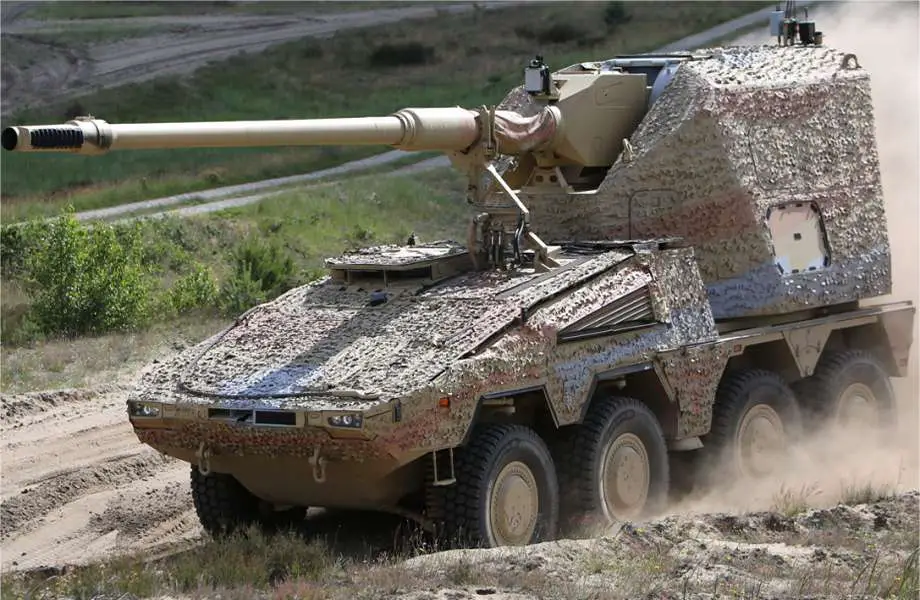In a tweet from Ukrainian Front published on August 29, 2023, it was revealed that the German Boxer RCH155 155mm self-propelled howitzer is currently in production for Ukraine. The first units are expected to be delivered in the first quarter of 2024, with additional orders to be announced soon.
Follow Army Recognition on Google News at this link

Self-Propelled Howitzer Boxer RCH155 (Picture source: KNDS )
Artillery systems play a crucial role in Ukraine, so the production of self-propelled guns is always welcome, especially when they are expressly dedicated to Ukraine. Moreover, this modern variant will provide a significant boost to the Ukrainian Armed Forces, much like older self-propelled guns such as the CAESAR and the PZH2000 have done.
The RCH155 is a compact but powerful system, with a length of 10.4m, a width of 2.99m, and a height of 3.6m. It manages to maintain a weight under 39 tons, making it a mobile artillery piece. This is particularly important in modern warfare, where rapid deployment and quick maneuvering can make all the difference.
In terms of armament, the RCH155 is equipped with a 155mm/L52 main gun. The system also offers the option of a remote-controllable secondary weapon station, providing additional versatility in combat scenarios. The caliber of the main armament makes it compatible with standard NATO rounds.
Powered by an MTU engine capable of delivering up to 600kW (815 hp), the howitzer boasts a speed of over 100km/h on roads. This speed is complemented by a power-to-weight ratio of approximately 21hp per ton, ensuring that the vehicle can easily navigate challenging terrains. With a range of over 700km, the RCH155 is designed for extended operations.
What truly sets the RCH155 apart is its crew requirement—or rather, the lack thereof. The system is designed to be operated by just two crew members, a commander and a driver. This not only reduces the logistical burden but also facilitates its deployment in situations where manpower is limited.
What remains to be seen is how many RCH155s Germany will be able to produce and how many it will be able to send to Ukraine. The addition of self-propelled guns to Ukraine's military arsenal is undoubtedly a significant asset. The repair and maintenance of these vehicles also remain to be seen; Ukrainians will likely need to train mechanics specifically prepared to handle these tasks.















